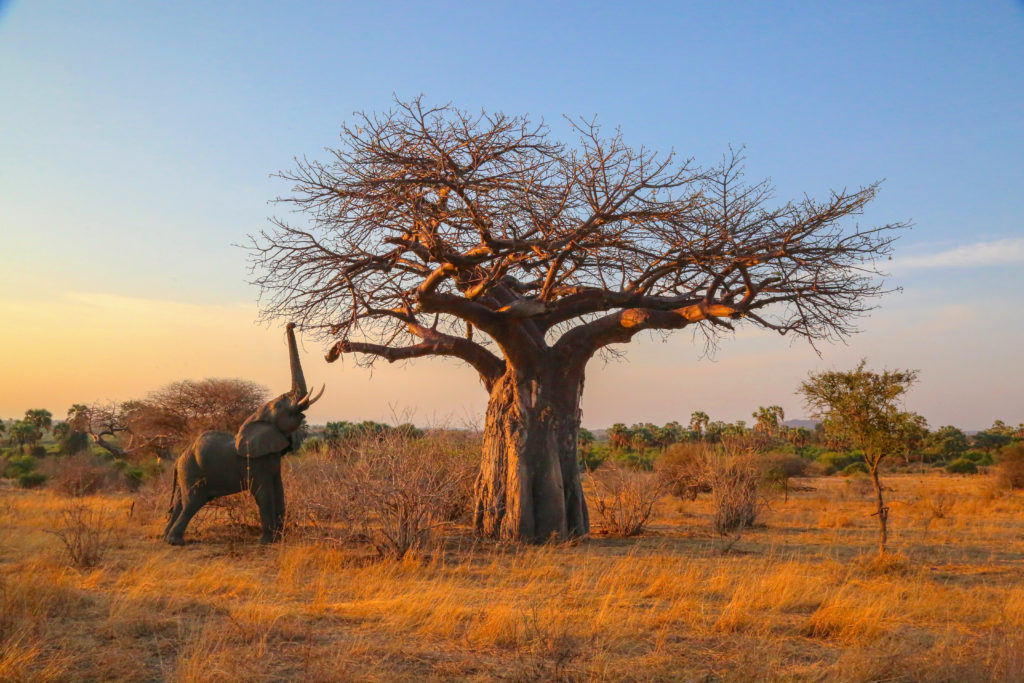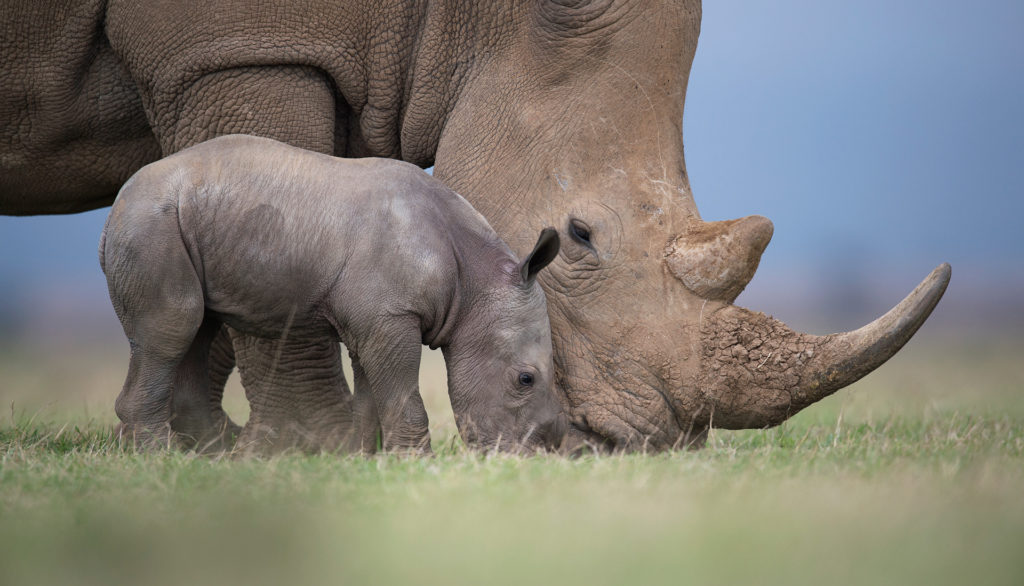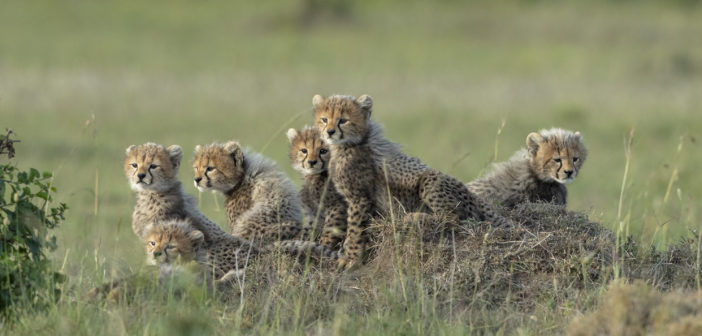Many people have heard of the big five: lions, leopards, rhinoceros, elephants, and cape buffalo. While the big five may be used today as a checklist for some of the most desirable animals to see or photograph on safari, its origin and main purpose are all about trophy hunting. These five big mammals made the list because they were considered the most challenging and dangerous kills for trophy hunters. But even as the public grows more disapproving of hunting, and more interested in more ethical ways of engaging with living wildlife, we continue to use the same list of species to guide wild animal viewing.
What would it mean to scrap that list and start over? As animal advocates push for a transition from hunting-focused to viewing or photography-focused wildlife tourism, it makes sense to push for a new big five as well. That’s exactly what is being developed by the New Big 5 project, founded by British wildlife photographer Graeme Green and supported by a huge list of photographers, conservationists, celebrities and organizations, such as Ami Vitale, Jane Goodall, Save The Elephants, Steve Winter and Moby, just to name a few. The project currently centers around rethinking the big five in terms of which animals are the most popular to photograph, and encourages an evolution in the ways we treat wildlife, something that is more important than ever as so many species face the threat of extinction.
In an interview with founder Graeme Green, we discussed the New Big 5 project, wildlife photography, and what wild animals need from us now.
Dylan Forest: What is your motivation behind coming up with the New Big 5? What do you take issue with about the existing big five and what would you like to be different about a new list?
Graeme Green: I’ve been thinking about this idea for years. The main thing I kept turning over in my mind is that trophy hunting has become outdated and irrelevant to most people, as well as being unnecessary and cruel. It’s strange people still make reference to the five animals that colonial-era hunters found most challenging to shoot and kill. I don’t think any wildlife lovers really care about the old big five. I know a lot of people who refuse to use the term in their safaris or camps. When you see the outrage over the killing of Cecil the Lion or other animals killed by hunters, the public’s view is clear.
On the other hand, wildlife photography is much more meaningful to people today. It’s become so popular and it’s a creative way to celebrate wildlife. Not only does it not involve any suffering or killing, but photography is a powerful tool in helping to protect wildlife.
In the simplest terms, the old big five is about death and the New Big 5 is about life.

A foundation of the idea of the New Big 5 is the concept of wildlife photography as an alternative to hunting. What do you value about photography as a way for people to engage with wild animals?
We all move through the world so quickly, with a thousand things on our mind: time pressures, deadlines, technology… Photography is a way to slow down. You have to look around and soak up what’s happening around you. Spending time in nature is really good for us, something we often forget. Although I love taking photos, I also get a lot from just being in wild places, whether it’s the jungles of Mexico or the grasslands of Tanzania, and spending time with wildlife.
Many of us have become too disconnected from nature. I spend way too much time at my computer. But I know spending time with wild animals and in natural environments, with or without my camera, is good for the mind and soul.
Trophy hunting is generally carried out by a particular elite group. Do you see wildlife photography as more accessible to people with an interest?
Yes and no. It’s definitely true that many of the people spending thousands and thousands of pounds to hunt big game animals in Africa are incredibly wealthy. Some might come from privileged backgrounds where hunting is part of their family tradition, while others might be wealthy industrialists who think of killing animals as a great adventure. But you get trophy hunters from all kinds of backgrounds, including quite a lot of people from the United States, maybe who grew up with hunting as a tradition and dreamed of going and shooting a lion or antelope. I dislike the idea of killing any animal for fun. Not only does it cause a lot of suffering with painful slow deaths, but trophy hunting is such a ridiculous activity now. There’s very little challenge in hitting a sitting target from a van or a hide. No one should feel any pride in that.
I have to be honest, though, and say wildlife photography is also expensive. Lenses and cameras cost thousands, and it can be alienating to some people. I’ve never found it easy to afford the right gear, but you just have to work at it.
The major difference between hunters and photographers is attitude. Photographers tend to want to celebrate nature, to capture the beauty of wildlife and help to protect the natural world. They see the world as belonging to all of us, people and animals. Hunters, on the other hand, seem to see the natural world as being there for their entertainment, to use as they like. I spoke to one hunter who saw no difference between shooting an animal and pulling up a carrot, which seemed incredibly ignorant to me. Trophy hunters tend to be very narcissistic and have a lack of empathy, which probably crosses over into other areas of their lives.
I want to mention, though, that the New Big 5 project isn’t an anti-trophy hunting campaign. I just wanted to create something positive, a big five of wildlife photography that celebrates the incredible wildlife we share the planet with, and to hopefully draw attention to the many threats animals are facing. Habitat loss and poaching for the illegal wildlife trade are both greater threats to animals today than trophy hunting.

What advice do you have for beginners who want to get into wildlife photography?
You learn most from experience, so it’s important to get out and take photos. You need to constantly look at your photos and think about what you can improve, both on the technical side, such as sharpness, or on the creative side, with your composition or use of light.
Gear isn’t everything. You can be creative with whatever camera you have access to. But good lenses definitely help you take better pictures, so if you’re serious about photography, it’s worth working and trying to buy lenses that will help get the results you want.
We’re living in a time when so many wildlife species are on the path towards extinction due to human activities. How do you imagine this project benefiting wildlife?
My hope is that we can help raise awareness. So many people care about wildlife but maybe don’t know just how bad the situation is. African lions, one of my favorite animals to photograph, have dropped from 200,000 individuals in the wild to just 20,000 in the last 50 years. Cheetahs are down to around 7,000. Giraffes are quietly disappearing across Africa. Elephants are still being killed at an alarming rate for their tusks. The International Union for the Conservation of Nature (IUCN) reported that a million species are at risk of extinction, everything from Amur leopards to pangolins, the most trafficked mammal in the world.
On the New Big 5 website, I’ve recorded a series of podcasts with people like Ami Vitale, Thomas D. Mangelsen, Brent Stirton and Ian Douglas-Hamilton (Save The Elephants), and we’ve produced a lot of interviews and articles, so there are plenty of ways people interested in wildlife can find out more and hopefully get involved with causes they care about.
Human activity is driving these extinctions. A lot of species, like pangolins, tigers and rhinos are sold in Asia for traditional “medicine,” despite the fact these products have zero scientifically-proven medicinal use. We’ve got animals losing their habitats so that companies can clear land for palm oil or other food supplies we all use. These are problems created by humans, which means humans can also solve them, if we put our minds to it.
People can vote now on their choices for the New Big 5. What do you think makes an animal a good choice? As an experienced photographer, what makes you want to photograph certain species?
It’s a really personal choice, which is what makes it an interesting question: what’s your personal big five? Jane Goodall, one of the supporters of the project, said “The animals chosen will reflect the participants’ characters as much as the qualities of the animal themselves.” I think there’s truth in that. I think some people have an affinity with elephants or great apes because they see their “human” qualities of intelligence and emotion. Other people like the enigmatic cool of wolves or snow leopards. The animals we feel a connection with say something about us.
For me, I love photographing lions, and I hope they make it into the New Big 5. There’s no guarantee they will. They’re so beautiful, and they have such a range of behavior, from aggression to tenderness.
But I also really enjoy photographing smaller, lesser known creatures, such as alien-like lizards or colorful birds. Every animal is interesting if you take the time to study them. What I hope we get across with the project is that we value all wildlife, large or small, famous or “unsung heroes,” and want them all to be protected.

I imagine it can be a powerful experience to be close to wild species that few people get to ever see in person. How has your own career as a wildlife photographer shaped how you see wild animals?
My career as a wildlife photographer means I’ve got to see and spend time with incredible animals all over the world, in a way that definitely wouldn’t have been open to me otherwise. It’s made me feel very connected to the natural world. You learn something new every time you spend time with animals, whether it’s something about social relationships or unique behavior. You also really see animals as both intelligent and emotional, as individuals who can think and feel, and that makes it feel more important to protect them.
Working on the project and talking to so many photographers and conservationists, I’ve really learned an incredible amount, too. The biggest lesson is how connected everything is, how every plant and animal has a role to play, and that humankind is not separate from the natural world. We should protect wildlife for their own sake, because all these animals deserve to exist. But as recent events have shown us, when we abuse wildlife and the natural world, there are consequences for people too.
Which animals would you choose for the New Big 5?
Lions topped my big five, because I can happily spend days photographing them. I also chose elephants, monkeys (especially geladas in Ethiopia), gorillas and leopards. As everyone keeps telling me, it’s really difficult to pick just 5. I also love photos of tigers, polar bears and cheetahs. Those mental debates and discussions are what makes the question exciting. I’m really looking forward to seeing the final five that the world chooses.
How can people get involved with this project and with the fight to protect threatened wildlife species?
We’re really trying to reach as many people around the world with the project as we can, so the biggest thing people can do to help is share it on social media, share our articles, interviews and podcasts, spread the word, tell friends and family, write blogs and articles. The more we can reach people on these issues, the better.
We’ve worked with a lot of different charities on the website, including Save The Elephants, World Wildlife Fund, Polar Bears International, Dian Fossey Gorilla Fund and Save Wild Orangutans. If people want to get involved with a particular cause, they’ll find lots of ways to help on the website.
This is a time of crisis for the world’s wildlife. On so many issues, from deforestation to the illegal wildlife trade, urgent action is needed. I hope the project can help get that message out there.
For more information, visit www.newbig5.com.
Featured image: baby cheetahs in Kenya’s Masai Mara National Reserve. Image credit Usha Harish.





